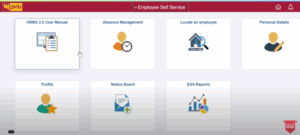Unlocking the Value in Structured Finance Markets: Leveraging Custom Data and Analytics

Structured finance is a financial instrument utilized by large-scale financial institutions or companies whose financing needs are too complex for traditional financial products. Collateralized loan obligations (CLO), asset-banked security systems (ABS), and commercial and residential mortgage-backed securities (CMBS and RMBS, respectively) are all examples of structured finance instruments.
Structured finance analytics and products are very useful to corporations, governments, and financial intermediaries today. They help manage risk, expand business reach, and design more funding instruments in increasingly complex emerging financial markets. Using securitisation, institutions can transform cash flows and remove certain assets from balance sheets.
Understanding Securitisation
Securitisation is at the core of structured finance and creates asset pools to form complex financial instruments. Since structured finance products are availed only by large organisations, pooling assets can increase capital gains. The resulting financial instruments are much more useful to corporations and investors with specific, high funding needs.
Securitisation Has Many Benefits, Such As:
- Creating alternative funding
- Less focus on credit
- Effective risk management
- Efficient capital use to drive profit
- Inexpensive funding options
- Removing risk to the investors
This process is often desirable to borrowers since they can combine assets into various collateral systems. The resulting financial instruments can then be sold to investors in tiers, promoting liquidity through more efficient use of existing capital.
As a structured finance provider, you need to analyse your organisation’s activities on a client-by-client basis. Custom data and analytics can help you with this goal, improving your asset management and portfolio while keeping a keen understanding of your business performance.
How to Leverage Structured Finance Analytics and Custom Data
Custom data refers to client-based data that showcases your relationship with a specific client. Custom data solutions help you track their behaviour. In structured finance, this might mean in terms of credit rating, loan provisions, etc.
Leveraging custom data and analytics requires you to understand various aspects of the market. Choosing an analytics partner can make this process much easier. Most providers have a team that give your company a wide range of services to make portfolio management, asset finance, structuring, trading, research, risk analytics and reporting much easier.
You can leverage these analytics by understanding some crucial aspects of the kinds of services you can use.
Buy-Side Analytics
Buy-side support refers to services you get to help analyse client behaviour. It is an essential part of structured data analysis, helping companies understand their clients and make effective decisions about various structured finance processes in the future.
Buy-side analytic solutions usually include:
- Buy-side research
- Portfolio monitoring and surveillance
- Risk analysis, stress testing
- Valuation and trading
Many providers also customise solutions based on institutional needs for improved results. When combined with custom data about various clients, these analytics can exponentially enhance a company’s success.
Sell-Side Analytics
The sell-side practices refer to the structured finance instrument providers, i.e. the institutions providing various types of financing to large organisations. Here, services often cover:
- Cash flow, waterfall modelling, and third-party tie-outs
- Collateral analysis
- Deal structuring
- Investor reporting
- Loan tape cracking
- Periodic, thematic research and newsletters
- Pitchbook, pot list and new issuance tracking
- Pool optimisation
- Sell-side research
- Warehouse and conduit reporting
These services promise increased efficiency for internal processes unconcerned with the buyer. The sell-side focuses more on the investors and making procedures within the institution more efficient.
Instrument Creation
Securitisation and creating financial instruments can be a challenge if organisations do not understand their options in structured finance. Product management is an essential part of structured finance analysis and includes the following:
- Asset-backed securities: ABS, CDO, CLO, auto ABS, aircraft ABS, credit cards/accounts receivable
- Esoteric assets and transactions
- Mortgage-backed securities: RMBS, CMBS
- Whole-business securitisation
Depending on the assets available to your client, you provide the structured finance accordingly. A good analytics system can help you maximise gains while optimising capital usage. Therefore, choosing an analytics provider improves your offerings.

Pranab Bhandari is an Editor of the Financial Blog “Financebuzz”. Apart from writing informative financial articles for his blog, he is a regular contributor to many national and international publications namely Tweak Your Biz, Growth Rocks ETC.






